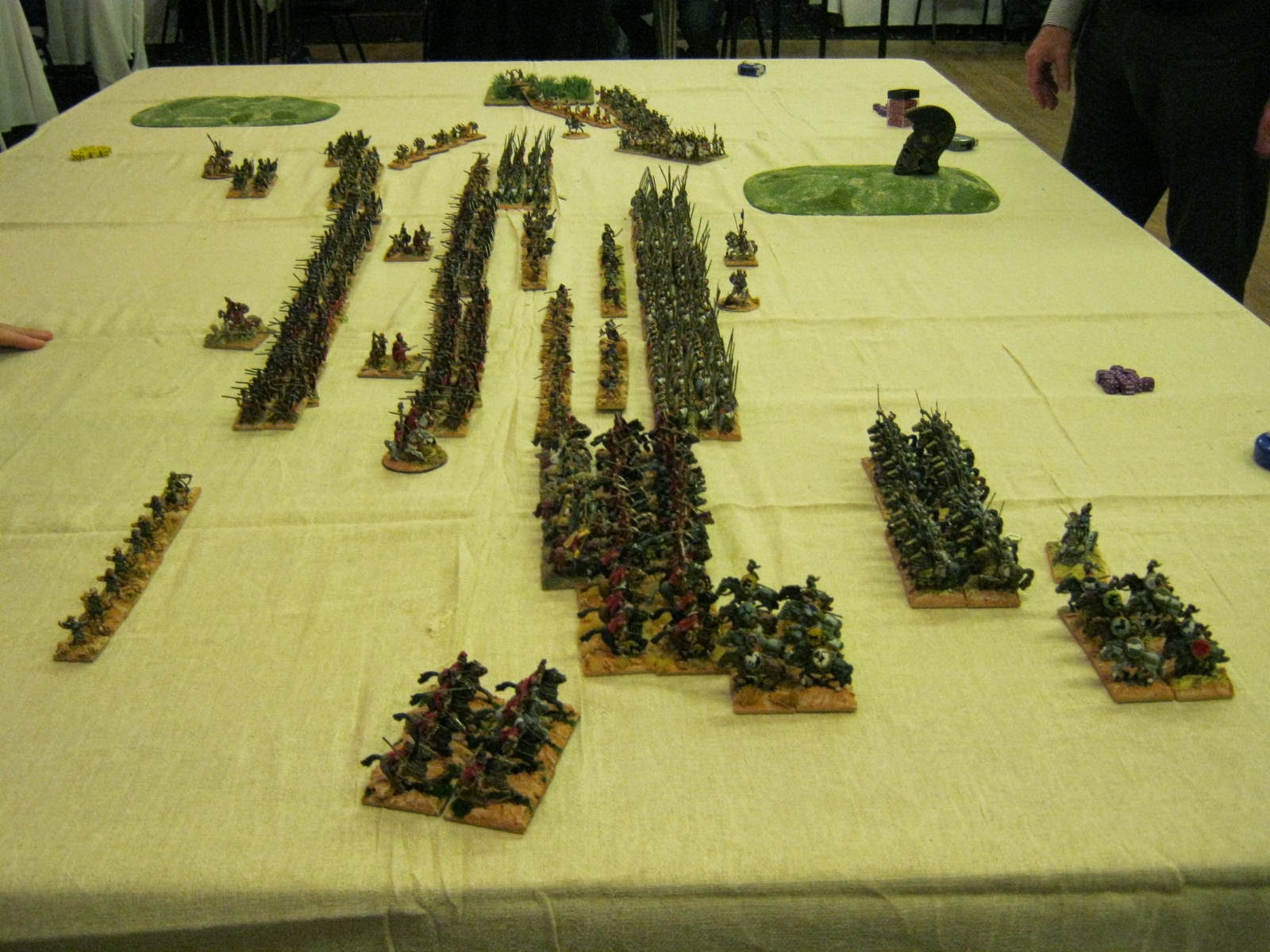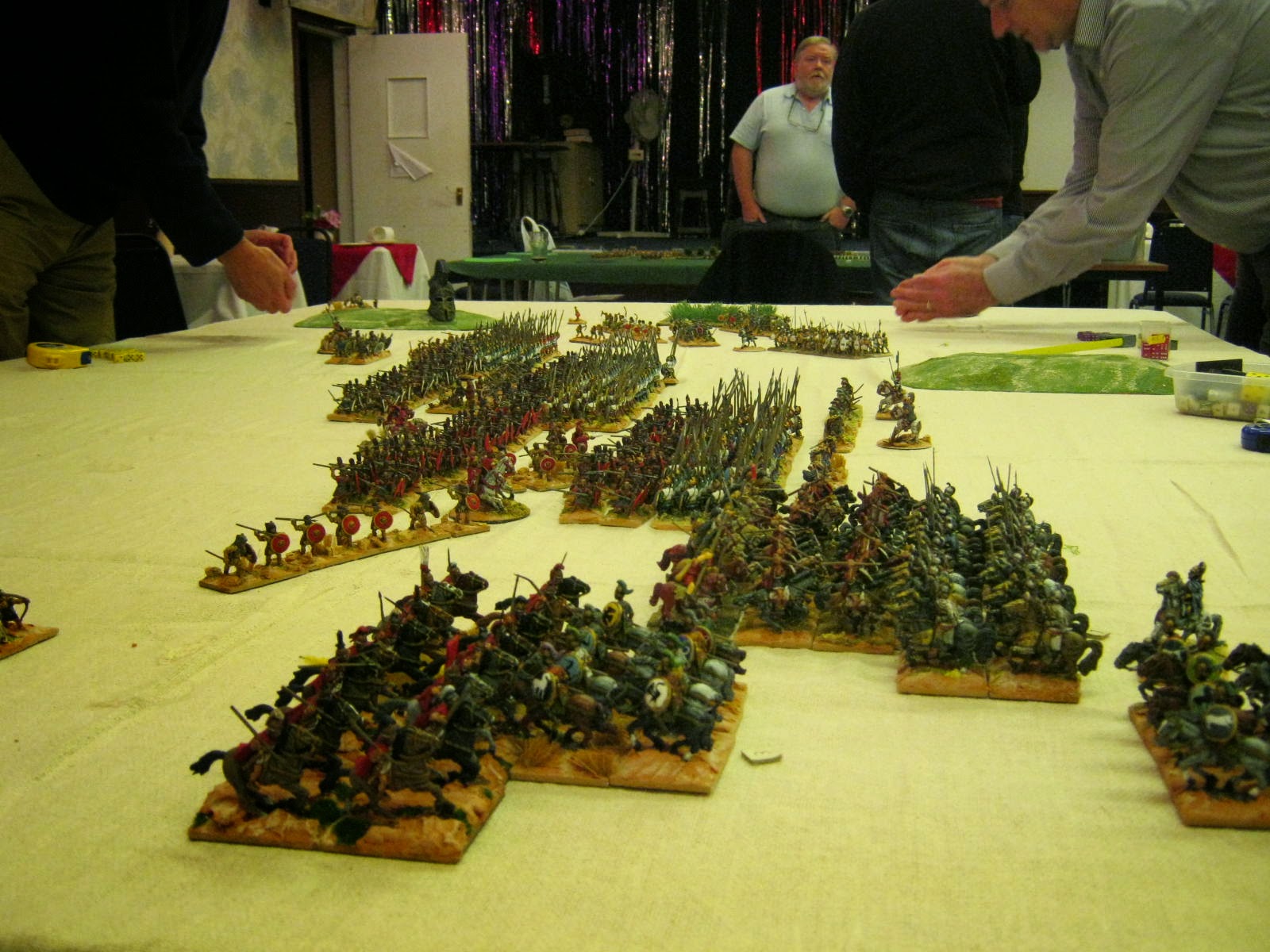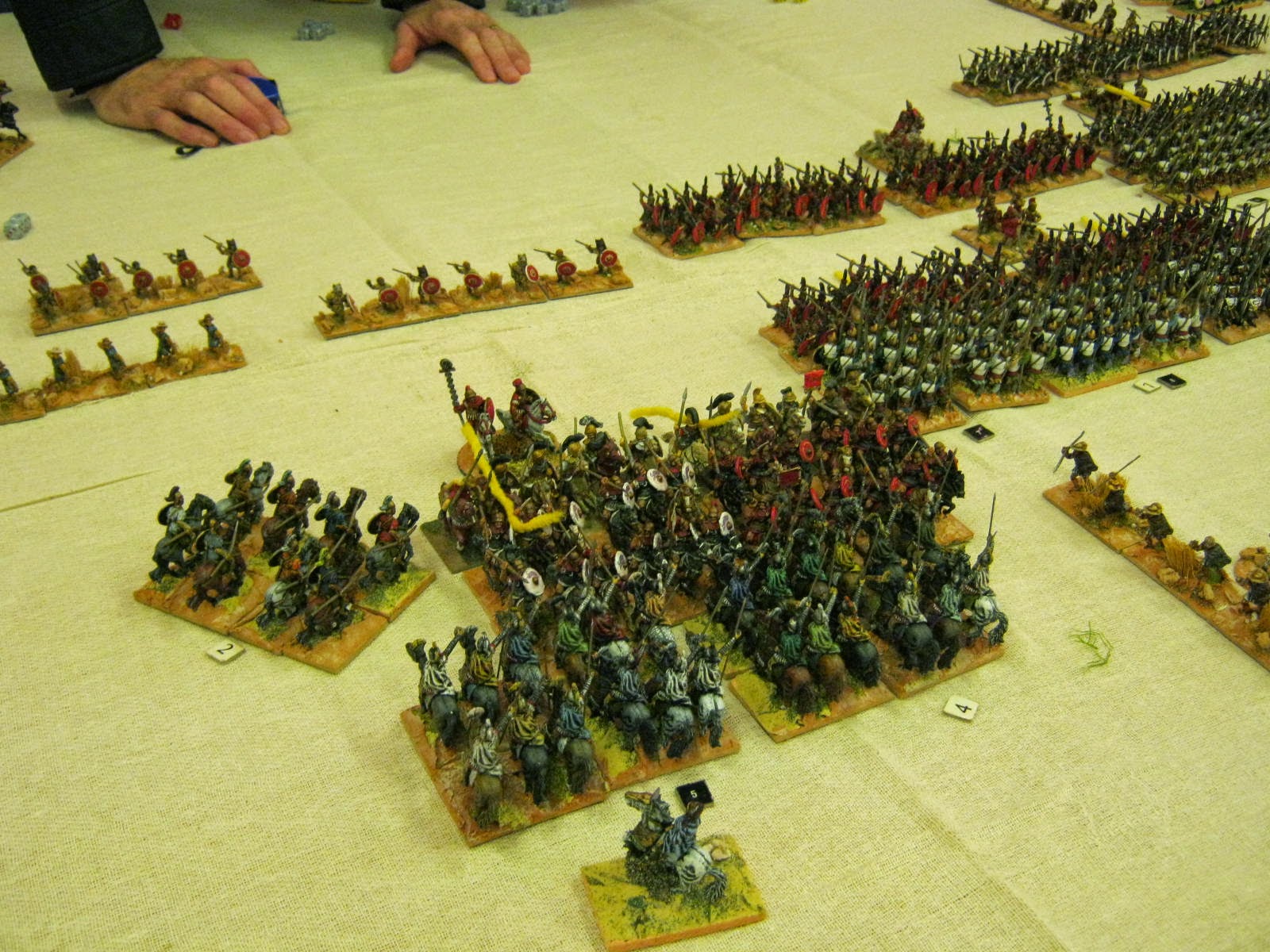After a hiatus of some weeks (family commitments), I made it back to the club for the latest battle in the campaign as the Indians attack Bactria.
I chose and deployed the Bactrians Greeks, while Simon brought his lovely Indian army for its first outing in a while, with Gordon deploying them. First up is the Indian right wing. Simon reckons that since this army comes a couple of hundred years after Hydaspes, its composition should be somewhat different from the army of Porus. Only generals have chariots, and there are some auxiliary horse archers, which you can see in the photo above.
The Indian centre right is a shallow line of foot archers, and then a chunk of elephants. Gordon is in command of the forces in the first two pictures.
Billy commands the left half of their army, which as you can see has a veritable host of pachyderms, plus other stuff. This army sure looks glorious.
Above is the first photo of the defending Bactrians. This is Simon's command, comprising light cavalry, some peltasts hidden in the wood, and a small unit of heavy phalangites.
Our centre: a massed medium phalanx, commanded by Graham.
My command has pretty much everything else.
A side view down the table, showing the relative deployments.
First move: Simon holds on our left.
Graham advances the phalanx.
I hold. There's a lot of weight coming in my direction...
How the whole thing looks at this point.
On our left, Simon commits all of his troops, including the sneaky peltasts.
Graham advances the phalanx.
And I continue to do as little as possible.
The usual lengthy tableshot. Much hilarity is enjoyed by the Greek command as the Indian prince is heard grumbling about pesky hidden peltasts, a larger phalanx than expected, and enemy elephants (we have four, they have twelve). In other words, Gordon is convinced he is going to lose.
Simon's large units of javelin-armed light horse attack the smaller auxiliary horse archers on the other side, and his peltasts and phalanx line up against the lone unit of Indian elephants here.
The phalanx grins onward. Just to the right of Simon's force, Graham is about to attack two units of 24 Indian foot with three phalanxes of 32 figures. That means the Indians are outnumbered two-to-one here.
The phalanx also has superiority against the elephants and infantry in the enemy centre.
I make some judicious attacks to spoil the enemy advance while I have temporary superiority in weight. It won't last, but I hope to hold then long enough here while Simon and Graham win the battle.
Simon's lights sweep away the enemy lights.
Remember the three leftmost phalanxes? The ones who have twice as many troops as the enemy? Well, the photo above shows the sort of thing they are up against. And that's just one of Gordon's rolls.
To the left, Simon continues to do well.
Those phalanxes simply disintegrate. Two down, one to go...and that one is shaken and disordered on morale. When it goes, our army will have lost half of its breakpoint. Gordon suddenly perks up...
\the rest of the phalanx is doing better, but it won't be enough.
The final photo shows my troops just before they are all destroyed.
The Indians win, but at a cost. and they won't be able to hold the province. Which means the Parthians will do what Parthians do best - mount a gigantic raid, stab the Greeks in the back and then run off with the spoils. At least, that's how we decided it should go, almost like a kriegspiel.
I did notice one thing about this game and its outcome, which is that we all had a good time and nobody cared about the freaky results. The reason for this, I think, is that although it was a campaign battle, nobody had much of an emotional investment, and that is pretty much true of the campaign as a whole. We are effectively using it to generate battles, each of which is a free for all multi-player, all welcome. Since I generate the games almost automatically, no player runs any single state, which removes extreme competitiveness. It also explains the campaign's longevity, following on from the end of the long running Empire campaign. If individual powers are not run by a specified player, then we avoid that well known course of campaigns, player drop-out. The whole thing is a group effort, and that insulates us against that happening.





































.jpeg)

















.jpg)
































































































































